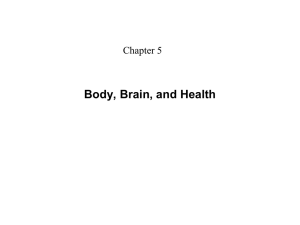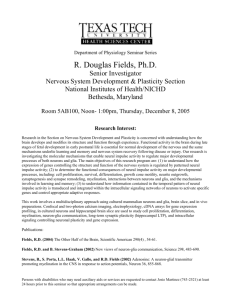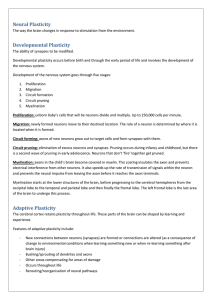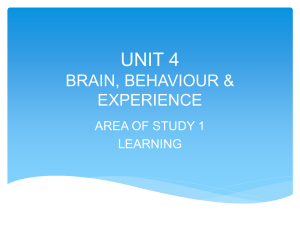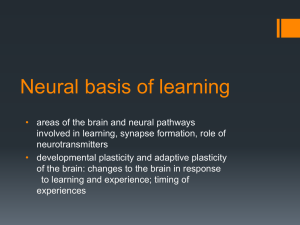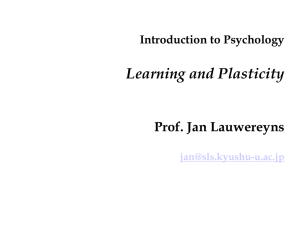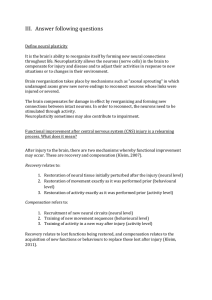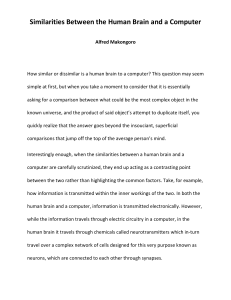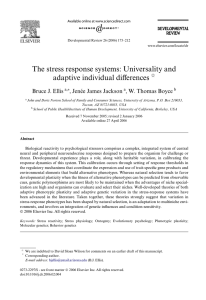Plasticity of the brain
advertisement
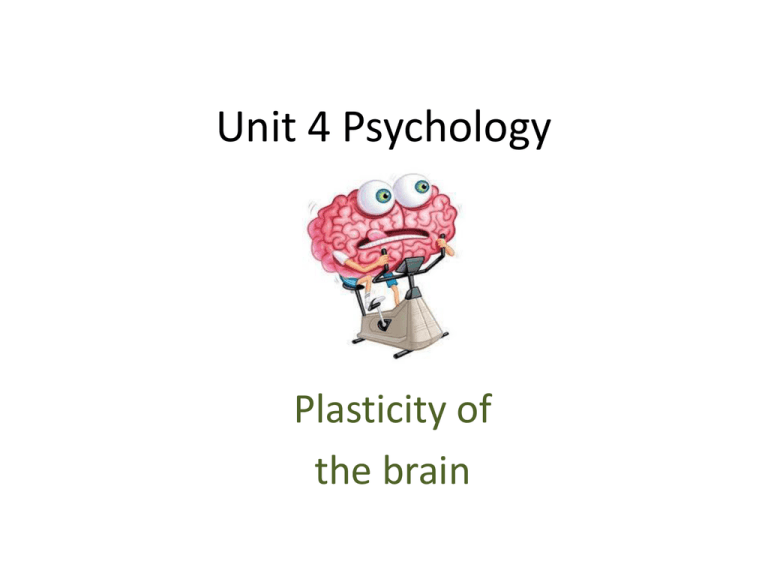
Unit 4 Psychology Plasticity of the brain Brain Plasticity • The brain’s ability to reorganise and relocate neural pathways based on new experiences and learning. • Also known as neuroplasticity. Developmental Plasticity • The process of strengthening new and frequently activated neural connections through experience with the environment • Also facilitates the elimination of weak connections that are not used. • The neural changes occur as a result of learning and development of the organism Application: Circuit Formation vs Circuit Pruning When a baby is born, there are around 2500 synapses for each neuron in the cerebral cortex. After a few years, the number of synapses increases to around 15000 per neuron (Circuit Formation), then reduces to around 8000 per neuron in adulthood – as old and disused connections are eliminated (Circuit Pruning). Adaptive Plasticity • The process whereby brain functions can be relocated to other areas of the brain. • Changes in the brain’s neural structure that enable adjustment: – Due to experience – To compensate for the loss of function sustained (usually as a result of damage) – To maximise remaining functions in the event of brain damage. Application: – If an individual suffers a loss of function due to damage of the neurons in the brain, then adaptive plasticity can occur as neurons in the area surrounding the damage can change and take on the role the damaged neurons would normally control, in order to compensate for some of the lost function. – Hence, the individual has the potential to regain some functions lost after brain damage has been sustained, although it is rare for someone with brain damage to recover all of their lost functions. Adaptive Plasticity and Age • Children’s brains show greater plasticity than adults, this might explain why children learn languages faster than adults • In general, the later in life a loss of function occurs, the more limited the capacity for adaptive plasticity. – Loss can be: • Damage to neurons of the brain • Damage to a body part that can no longer communicate with the brain Reason: Neural Growth and development slow with age.
